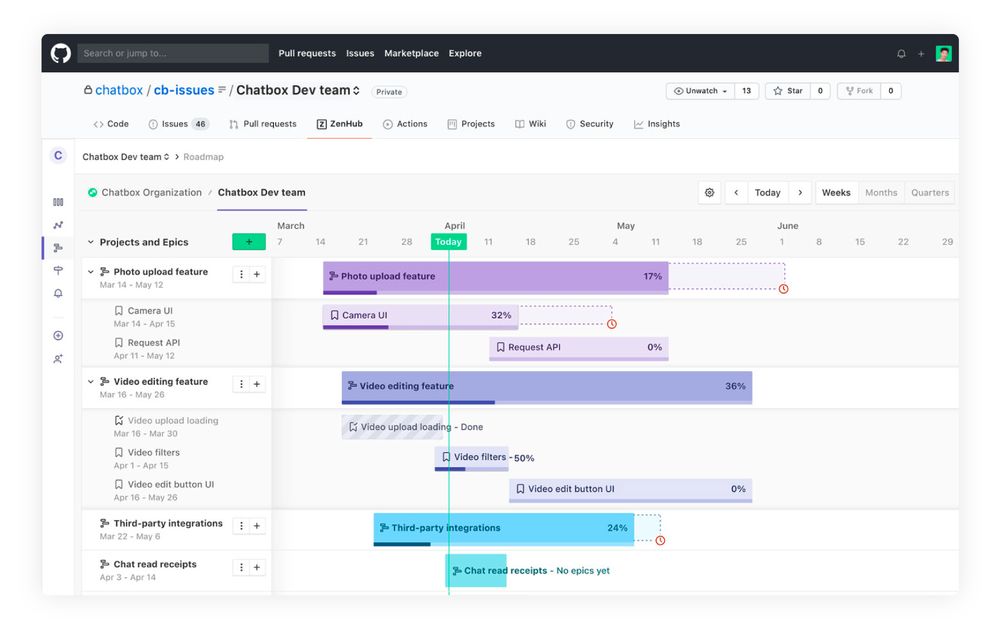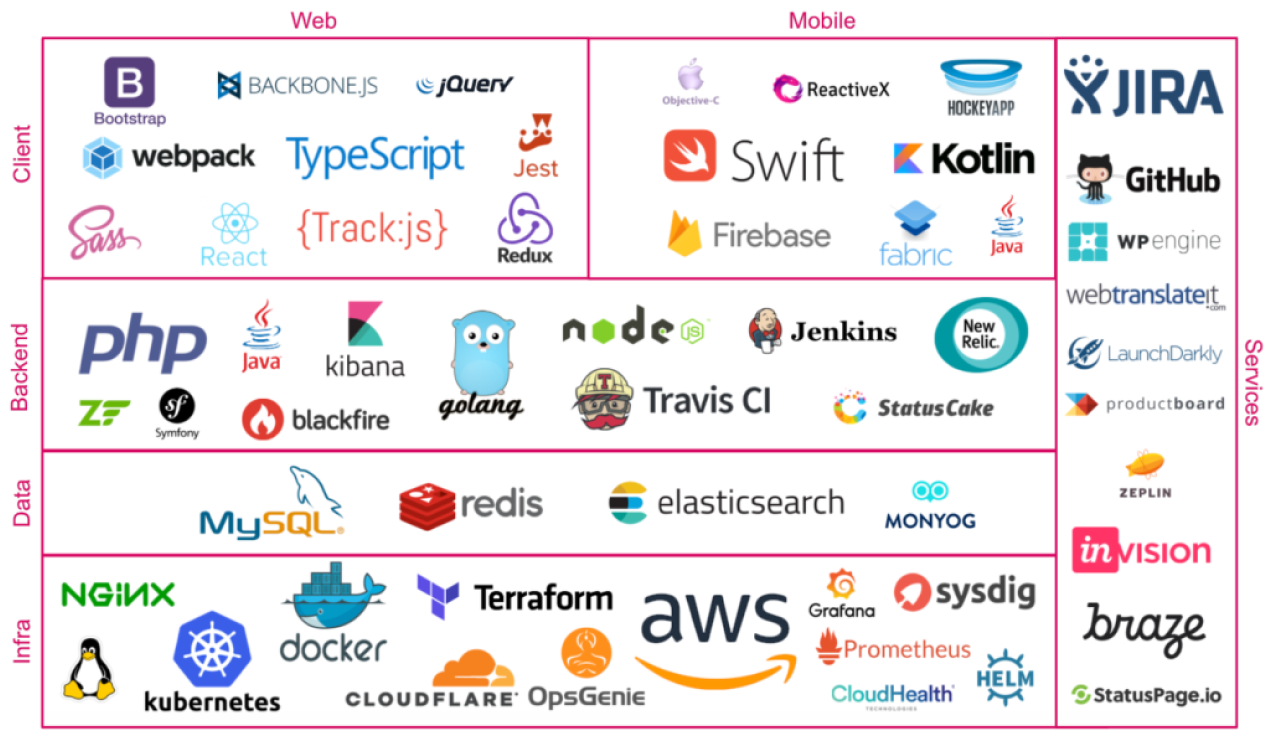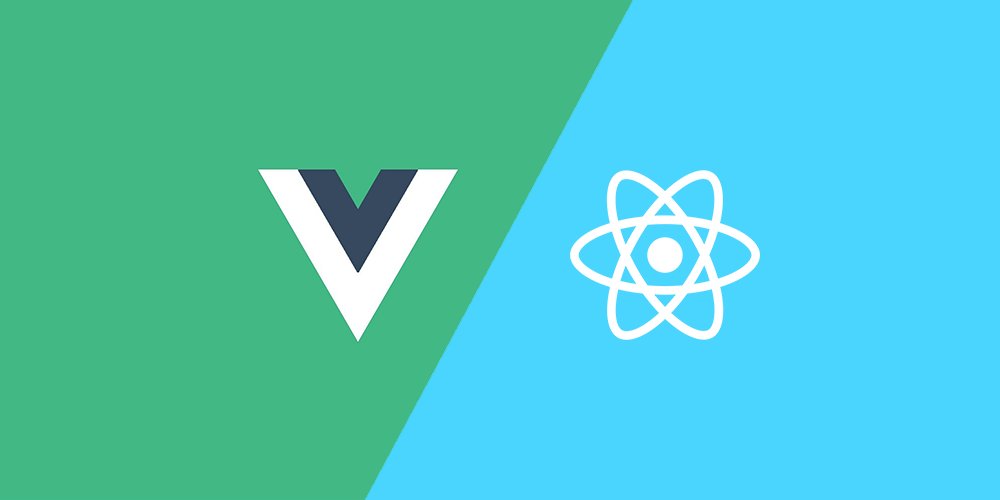The right technologies can mean the difference between success and failure for many projects. Poor decisions made early on can lead to complicated workarounds, poor performance, and skyrocketing infrastructure costs over time. At the same time, the vast number of options and rapid pace of change makes it hard to choose technologies.
Let's look at how to choose the right technology stack for your project and where to look for some outside help if you're stuck.
The right tech stack can mean the difference between success and failure—here's how to choose the right option for your project. Share on XWhat is a tech stack? What does tech stack mean?
When someone asks, "what stack do you use?", they're referring to the collection of technologies used together to create a product or service, also known as a tech stack. The components of a tech stack can vary depending on the company and their needs, but typically include a web server, a database, and a programming language, giving meaning to the term "technical stack."
The term "tech stack" or "techstack" is often used in the context of web development, but it can be applied to any field that relies on technology to create a product or service. For example, a company that makes mobile apps might have a tech stack that includes a mobile operating system, a programming language, and a set of tools for creating and testing apps.
When choosing a tech stack, you may also want to consider open source software over closed source, which can offer cost savings and the support of an active community. However, be sure to assess the quality and maturity of the open source technology before adopting it, as not all open source projects are created equal. Some projects also have a commercial version or component to them - be sure to consider the potential software bill and the business model behind the project when making these decisions.
Companies should consider their needs and the capabilities of the available technologies. For example, a company that needs to process a lot of data might choose a stack that includes a database designed for handling large amounts of data. A company that plans to launch a new product quickly might choose a stack with components that are easy to learn and use. In order to make these kind of decisions, leads us to the first step: gathering requirements.
Gather the Requirements
Software development should always begin from a user perspective rather than a technology perspective. For example, you should write user stories or job stories and determine required behavior before choosing the underlying technologies you'll use to build a project. It's always best to understand the project's scope before making any hard decisions.
The simple reason is that different projects have different technical requirements. For instance, a real-time chat application will scale much better with web sockets than a PostgreSQL database. If you choose a PostgreSQL database and then discover you need a real-time chat, you'll waste a lot of time updating the technical architecture.
The stage of your business may also influence requirements. For example, a startup building an MVP may be willing to accept technical debt or sacrifice performance to launch more quickly. After all, there's no point in spending a tremendous amount of time developing a project if it turns out that there's no market for it in the first place!

Example of a product roadmap outlining features. Source: ZenHub
Product roadmaps bring these requirements together in a single, unified document. The best roadmaps detail the specific steps needed to build an application, anticipate any obstacles that might occur along the way, and provide the most straightforward path to launch and long-term stability. Think of it as the project's guiding vision.
Development Resources
Your existing development team probably already has a programming language and platform preferences. For example, a group of Python experts would likely prefer Django over Ruby on Rails for a web application (as an aside, check out our excellent guide on avoiding common security vulnerabilities in Django). It's essential to factor your team's comfort levels with different technologies into any decisions.
That said, developers may be open to experimenting with new technologies. For instance, a team of JavaScript developers may be eager to try Elm or another type of language. So, survey your development team and determine if they're experimenting with any new technologies in their free time that might be a good fit.
If you need to hire developers, you should also consider the job market for each technology. It's much easier to fill a position for a widely-used development language or platform than a niche choice. Some developers may also be more highly paid than others, influencing the project's budget, timeline, and other considerations.
Programming languages also tend to change over time. So, for example, you probably shouldn't begin a new iOS project with Objective-C, even if developers are cheaper, because the iOS ecosystem is moving toward Swift. On the other hand, you might pay a premium for Typescript experts when you could use vanilla JavaScript in some cases.
Stability, Security & Performance
Different technologies have different levels of maturity, stability, security, and performance. For example, a new cutting-edge technology might offer unparalleled performance, but it might be in a constant state of change, making it a pain to maintain. In some cases, you may have to sacrifice performance for stability or security.

Examples of components of a tech stack. Source: Pinterest
Some applications may have unique security requirements, too. A typical example is in healthcare, where companies must comply with HIPAA laws. These particular requirements may require specific types of technologies or rule out the use of some technologies. In short, sometimes, the technology stack is more or less set in stone already.
Performance may be the most crucial consideration for some applications that require speed. Analytics applications, for example, may need to be exceptionally fast to avoid slowing down user websites. Unfortunately, older technologies may not meet these performance requirements, forcing you to consider new technologies.
As with programming languages, frameworks are constantly changing to meet new demands. For instance, Ruby on Rails has been around for more than a decade but recently introduced Hotwire to simplify single-page application-like user experiences. So it's a good idea to look at the roadmaps for technologies to see where they are heading in the future.
Best Practices to Keep in Mind
- Be wary of shiny new technologies. Many developers want to use shiny new technologies with slick landing pages and attractive benchmarks. However, these technologies are rarely mature enough for widespread adoption, and the talent pool is limited.
- Don't neglect the time to market benefits. Some technologies are much faster to implement than others. For example, Ruby on Rails or Django has many done-for-you components, such as routing and database access, enabling a shorter time to market.
- Look for well-maintained dependencies. Always seek out technologies that are well-maintained, either by a private company or by open-source maintainers. Without a good team backing the project, you could get stuck doing routine maintenance or patching security vulnerabilities.
- Seek out well-documented technologies. Documentation is critical for developers to build out a project effectively. Without documentation, the development team may need to read through source code to find what they need—a time-consuming process.
- Look at the long-term total cost. Some open-source technologies may seem cheaper at the moment, but commercial alternatives may provide a superior long-term cost advantage. Conversely, some open-source projects may be more affordable long-term.
Getting Outside Help
Many product managers find themselves overwhelmed when building a tech stack. In addition to the endless number of choices, different requirements, developer preferences, and other factors can make the decision difficult. Sometimes, it helps to have some outside input to provide unbiased expertise and ensure you're on the right track.
Our Custom Roadmap Development service can help you start right for a finish that's on-time, on-budget, and has all the features and functionality you want. Drawing on more than a decade of experience, we'll explore all the options and identify the soundest approach to achieve your objectives, delivering a clear-cut roadmap to success.
In some cases, you may need to adopt technologies that your team isn't familiar with to implement certain functionality. Our Team Augmentation service can help provide temporary expertise to fill the skills gap and ensure your project's success. In addition to adding human resources, our expert developers can help educate and support your in-house team.
The Bottom Line
The right tech stack can mean the difference between success and failure. By considering the project's requirements, development resources, and technology-specific features, you can find the technologies for the job and maximize the chances of success.
If you need help, we can help create a custom product roadmap with step-by-step technical instructions for building the software and augment your team with senior engineers. We can even develop projects from start to finish so that you can focus on your business.



